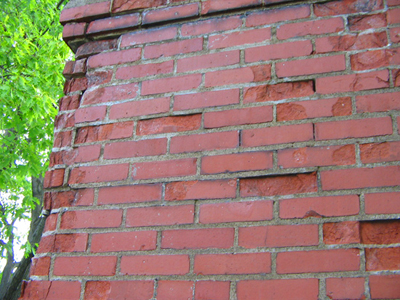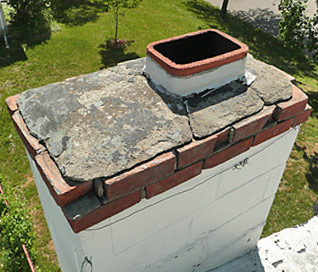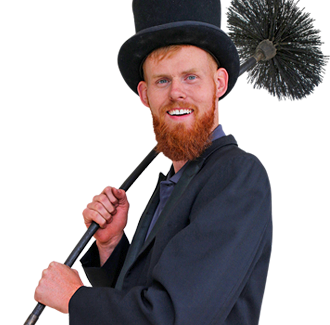Is Enemy Number One Attacking Your Chimney?
 Did you know that moisture is a chimney’s number one enemy? More damage happens to more chimneys because of moisture than anything else, including chimney fires. Part of the problem is that moisture problems aren’t usually obvious right away, and a lot of damage can occur before the issue is discovered. The National Fire Protection Association (NFPA) recommends getting your chimney inspected every year as a way of preventing house fires, but it also helps because professional chimney technicians are trained to identify moisture problems early. There are numerous ways in which chimneys are damaged by moisture.
Did you know that moisture is a chimney’s number one enemy? More damage happens to more chimneys because of moisture than anything else, including chimney fires. Part of the problem is that moisture problems aren’t usually obvious right away, and a lot of damage can occur before the issue is discovered. The National Fire Protection Association (NFPA) recommends getting your chimney inspected every year as a way of preventing house fires, but it also helps because professional chimney technicians are trained to identify moisture problems early. There are numerous ways in which chimneys are damaged by moisture.
Leaky Flashing. The flashing is made of metal and provides a watertight connection between the chimney and the roof. Correct installation of flashing is not easy to achieve, which is why flashing leaks often occur. The more common reason for flashing leaks is that the metal rusts, allowing moisture to get to the roof. Leaky flashing can cause leaks into the attic and structural damage to your roof.
No Chimney Cap. A chimney cap is considered an appliance, but for good reason it should be a standard part of any chimney. The chimney cap is installed at the very top of your chimney and serves the very important function of preventing rainwater from pouring into the chimney system. Among the problems caused by rainwater in the chimney is that your damper and other chimney components can rust. Moisture mixed with the creosote deposited in the chimney liner causes premature deterioration of the liner. When the liner is damaged, the house is vulnerable to catching fire because combustible parts of the home around the chimney are exposed to the extreme heat in the flue.
Mortar Damage. Too much water can contribute to the wearing away of the mortar that keeps moisture out of the chimney masonry. When the mortar cracks and crumbles, water makes its way into masonry. In winter, the freezing and thawing cycles cause the bricks and stone to expand and contract. All of that movement results in spalling, which is when the face of masonry flakes or pops off because of moisture inside. When mortar fails, the chimney can begin to lean and even collapse, if not repaired in time.

Bad chimney crowns can be the cause of moisture damage to your chimney.
Damaged Chimney Crown. The chimney crown is the cement at the top of the chimney that prevents moisture from falling between the masonry and the flue. When cracks first develop on the crown, it’s possible for them to be repaired. But when the cracks spread across the crown and deepen, it becomes necessary to do a complete rebuild.
One of the strategies for keeping out the chimney’s number one enemy is to apply waterproofing. The most reliable way to ensure that chimney damage doesn’t result in the need for costly repair, however, is to have your chimney inspected every year. Contact our chimney professionals for a chimney inspection. They are trained to identify early signs of moisture problems with your chimney and have the equipment necessary to spot even the deterioration that may exist in the out-of-reach parts of the chimney liner.








